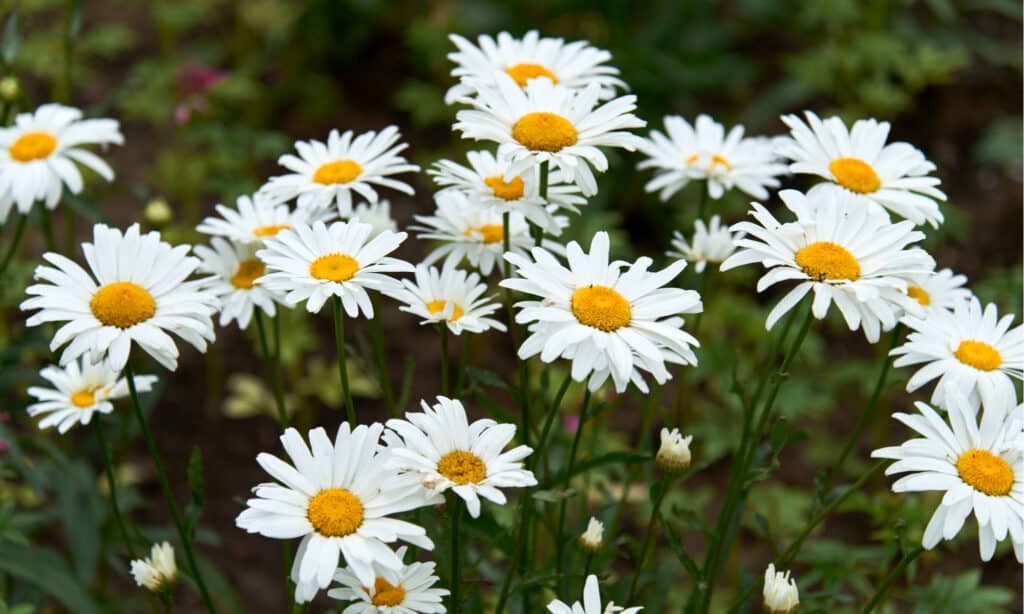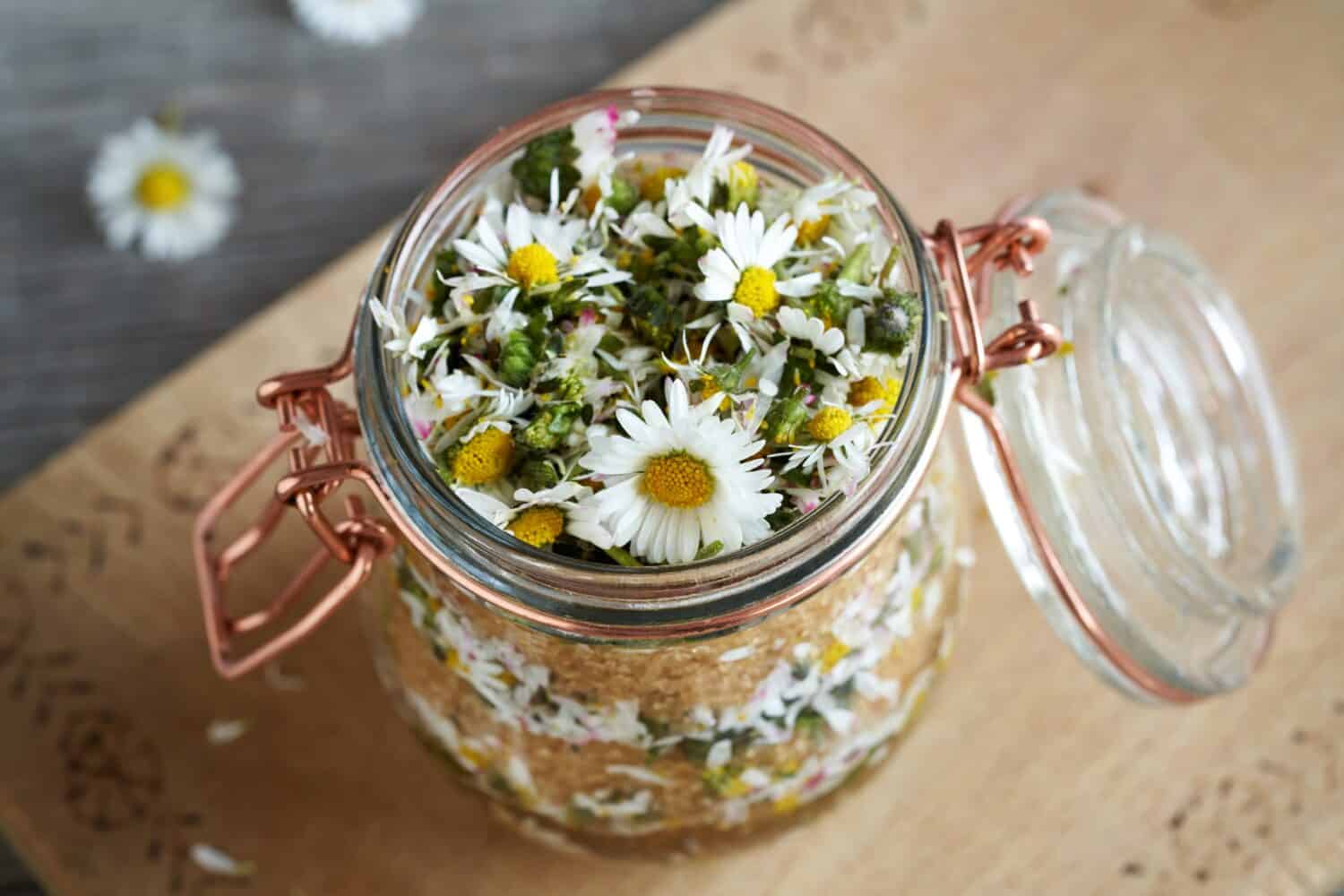Daisies are popular flowers often grown in front yards. They are also great gifts! Did you know there are thousands of daisy varieties, all with unique colors and sizes? In this article, we are going to focus on the English daisy. Keep reading to learn all about the English daisy plant, including how to grow your own.
What Are English Daisy Plants?
Before we can discuss caring for English daisies, we should understand them more. English daisies are sometimes also called lawn daisies or common daisies. The scientific name for this plant is Bellis perennis. English daisies are native to parts of Europe but are found throughout the world. They grow quickly and spread just as fast.
English daisy plants grow up to 8 inches tall. The flowers are circular with a yellow center and white flower petals. Sometimes, the white flower petals are tipped red.

English daisies grow up to 8 inches tall.
©Smyshliaeva Oksana/Shutterstock.com
How to Grow and Care for English Daisy Plants
Have you grown interested in English daisies? Thankfully, these beautiful and delicate flowers are easy to grow in the right conditions. Follow along to learn how to grow and care for English daisy plants.
Seeds
So, how do you plant English daisies? You start with a seed. English daisy seeds are very small. Before you can plant the seeds into soil though, you’ll need to choose a variety. When planting these seeds, only cover the seeds lightly with soil. English daisy seeds need a lot of sunlight. If you cover the seed up, it might take longer to germinate. The best time to sow the seeds into soil depends on the variety, but for most, it’s from late winter to early spring. The seeds take about 10 to 20 days to germinate.
Soil
Not all soil is the same. English daisies need nutrient-rich and moist soil that doesn’t retain water. If it’s not well-draining, the roots of the plant can drown. However, English daisies tolerate different conditions so they may grow in sandy soil or through mulch. Sometimes these fearless flowers grow through concrete cracks in the wall and floor! Typically, you can buy flower or vegetable potting soil from your local garden store for English daisies.
Sunlight
English daisies need about 4 to 6 hours of sunlight every day. They grow in full and partial sun conditions, however, too much sun can stress the English daisy plant and cause the leaves and petals to wilt. It’s important to note that these plants grow slower in the summer.
Water
English daisies are thirsty plants, especially while producing flowers and in the summer. They are not drought-tolerant flowers, meaning you should water them frequently, up to once every two to three days. The soil though needs to be evenly moist, so water the soil thoroughly, not just a section.
Fertilizer
English daisy plants produce beautiful and large blooms without fertilizer, but additional nutrients can help. The best type of fertilizer to use is a slow-releasing fertilizer in the spring. This is best for English daisies in poor growing conditions.
English Daisy Uses
What happens after you care for these beautiful English daisy plants? What can you use the flowers and leaves for? English daisies have many uses. They are great as decorations and you can add them to bouquets. However, apart from being a fashion piece, English daisies are also edible. For instance, taking flower petals, some people make wild daisy tea. This tea was previously used to treat coughs, common colds, and aches. However, the practice of using English daisies as medicine is growing more and more uncommon.

English daisy wild tea was used to treat many illnesses including coughs and colds.
©Madeleine Steinbach/Shutterstock.com
Can you Grow English Daisies in Containers?
While most people picture large fields of white and yellow daisies, they can be grown in containers. There are specific container-friendly varieties. English daisies also don’t grow very tall, meaning the container doesn’t need a lot of space. If you grow an English daisy in a container, choose one that is well-draining. If not, too much water can seep to the bottom causing root rot which can attract pests and kill the plant. It’s also important you space out the seeds. This is a bit difficult since the seeds are so small. However, you can always spread seeds in the soil and space seedlings out as they grow. Most English daisies die during summer. While some varieties act as perennials, others don’t come back after heavy sun exposure. This is especially common with English daisy container plants. Instead of fussing over keeping English daisies alive during summer, sow seeds in early spring.
The photo featured at the top of this post is © Carol La Rosa/Shutterstock.com
Thank you for reading! Have some feedback for us? Contact the AZ Animals editorial team.







